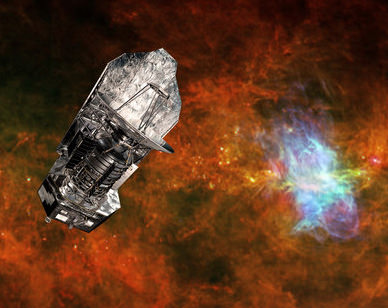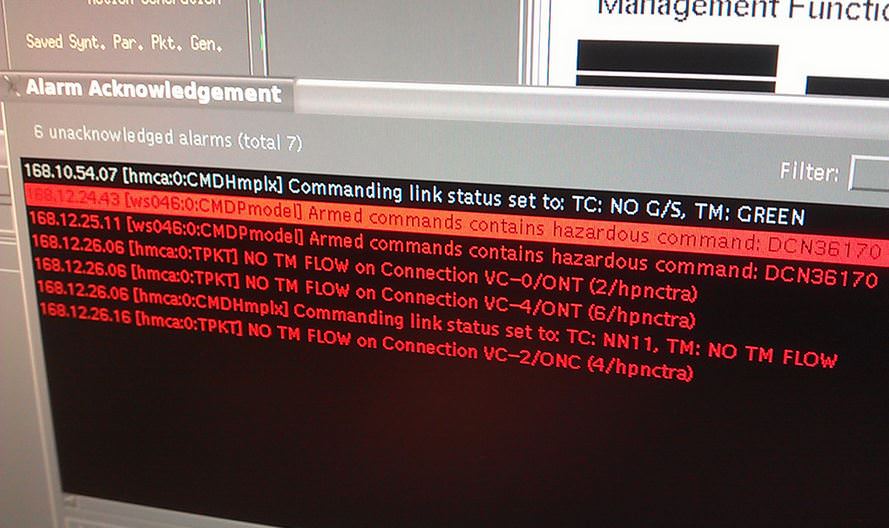We knew it was coming, but it is still sad to see the end of a mission. Controllers for the Herschel space telescope sent final commands today to put the observatory into a heliocentric parking orbit. Commands were sent at 12:25 GMT on June 17, 2013, marking the official end of operations for Herschel. But expect more news from this spacecraft’s observations, as there is still a treasure trove of data that that will keep astronomers busy for many years to come. Additionally, maneuvers done by the spacecraft allowed engineers to test out control techniques that can’t normally be tested in-flight during a mission.
You can watch a video of Herschel’s final “live” moments below:
Herschel’s science mission had already ended in April when the liquid helium that cooled the observatory’s instruments ran out.
Herschel will now be parked indefinitely in a heliocentric orbit, as a way of “disposing” of the spacecraft. It should be stable for hundreds of years, but perhaps scientists will figure out another use for it in the future. One original idea for disposing of the spacecraft was to have it impact the Moon, a la the LCROSS mission that slammed into the Moon in 2009, and it would kick up volatiles at one of the lunar poles for observation by another spacecraft, such as the Lunar Reconnaissance Orbiter. But that idea has been nixed in favor of the parking orbit.
Some of the maneuvers that were tested before the spacecraft was put into its final orbit were some in-orbit validations and analysis of hardware and software.

“Normally, our top goal is to maximise scientific return, and we never do anything that might interrupt observations or put the satellite at risk,” says Micha Schmidt, Herschel’s Spacecraft Operations Manager at the European Space Operations Center. “But the end of science meant we had a sophisticated spacecraft at our disposal on which we could conduct technical testing and validate techniques, software and the functionality of systems that are going to be reused on future spacecraft. This was a major bonus for us.”
The test requests came from other missions. For example, the ExoMars team requested doing some validations using Herschel’s Visual Monitoring Camera since ExoMars will have a similar camera, and the Euclid spacecraft team asked for some reaction wheel tests.
On May 13-14, engineers commanded Herschel to fire its thrusters for a record 7-hours and 45-minutes. This ensured the satellite was boosted away from its operational orbit around the L2 Sun–Earth Lagrange Point and into a heliocentric orbit, further out and slower than Earth’s orbit. This depleted most of the fuel, and the final thruster command today used up all of the remaining fuel. Today’s final command was the last step in a complex series of flight control activities and thruster maneuvers designed to take Herschel into a safe disposal orbit around the Sun; additionally all its systems were turned off.
“Herschel has not only been an immensely successful scientific mission, it has also served as a valuable flight operations test platform in its final weeks of flight. This will help us increase the robustness and flexibility of future missions operations,” said Paolo Ferri, ESA’s Head of Mission Operations. “Europe really received excellent value from this magnificent satellite.”
Source: ESA


I’m sorry Dave… I’m afraid I can’t do that.
(had to be said…)
LOL…2001 S.O..;-)
Why not sell the T-scope to a rich space pioneer or company who can put it to good use(s)? I don’t know much about the t-scope itself or its full capacity or main functionality. Seems a waist. Oh well, such as life.
Daisy….. daaaaaaiisssyy….
Yeah, but with a heavy Frrhench accent….
This would have been the perfect candidate for a Robotic Helium Refueling Mission??
Perhaps…if it had been designed for servicing and replenishment in space.
Unlike say, Hubble, none of that is accessible, no place to easily hook up an external feed (which was likely designed with the assumption that the only time cryofluids would go in it were in 1-G conditions), no place to even to dock with, or grab the thing.
The first thing critics will say is; “It would be cheaper to replace it.” With our current state of technology, they may be right.
And for various reasons, we need to do more cryofluid transfer engineering tests (Google: “CRYOTE” quotes and all) in LEO where we can more easily observe and control, especially LH2, LOX, LN2 and LHe…
All true, and tempting it would be to design them to be remotely serviceable would just add time onto design phase and in the end the agency may not want to fund the service mission in the first place.
Yes, it is sad to see Herschel’s end of its scientific mission, but it is going to be a nice statue of humankind for years to come on heliocentric orbit.
Well done ESA and Herschel! RIP (For now)